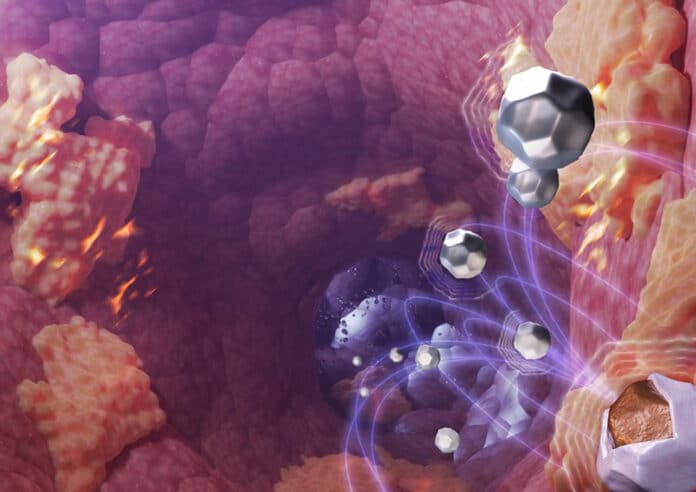Due to the limited heating efficiency of available magnetic nanoparticles, it is difficult to achieve therapeutic temperatures above 44 °C in relatively inaccessible tumors during magnetic hyperthermia following systemic administration of nanoparticles at clinical dosage.
To address this, scientists at Oregon State University have invented a way to make magnetic nanoparticles that get hotter than any previous nanoparticle, improving their cancer-fighting ability. Scientists have developed an advanced thermal decomposition method for producing nanoparticles that reach temperatures in cancer lesions of up to 50 degrees Celsius or 122 degrees Fahrenheit when exposed to an alternating magnetic field.
Scientists said, “Magnetic nanoparticles have shown anti-cancer potential for years. Once inside a tumor, the particles – tiny pieces of matter as small as one-billionth of a meter – are exposed to an alternating magnetic field. Exposure to the field, a non-invasive process, causes the nanoparticles to heat up, weakening or destroying the cancer cells.”
Olena Taratula, Department of Pharmaceutical Sciences, College of Pharmacy, Oregon State University, said, “Magnetic hyperthermia shows great promise for treating many types of cancer. Many preclinical and clinical studies have demonstrated its potential to kill cancer cells directly or enhance their susceptibility to radiation and chemotherapy.”
Oleh Taratula, Department of Pharmaceutical Sciences, College of Pharmacy, Oregon State University, said, “But at present, magnetic hypothermia can only be used for patients whose tumors are accessible by a hypodermic needle, and not for people with hard-to-reach malignancies such as metastatic ovarian cancer.”
“With currently available magnetic nanoparticles, the required therapeutic temperatures – above 44 degrees Celsius – can only be achieved by direct injection into the tumor. The nanoparticles have only moderate heating efficiency, which means you need a high concentration of them in the tumor to generate enough heat. And numerous studies have shown that only a small percentage of systemically injected nanoparticles accumulate in tumors, making it challenging to get that high concentration.”
To solve such issues, scientists have created magnetic nanoparticles that were more effective at heating through a novel chemical manufacturing process. They showed in a mouse model that low-dose systemic treatment of the cobalt-doped nanoparticles causes them to aggregate in metastatic ovarian cancer tumors and that they may reach a temperature of 50 degrees Celsius when exposed to an alternating magnetic field.
Olena Taratula said, “To our knowledge, this is the first time it’s been shown that magnetic nanoparticles injected intravenously at a clinically recommended dose can increase the temperature of cancer tissue above 44 degrees Celsius. And we also demonstrated that our novel method could be used to synthesize various core-shell nanoparticles. It could serve as a foundation for the development of novel nanoparticles with high heating performance, further advancing systemic magnetic hyperthermia for treating cancer.”
“Core-shell nanoparticles have an inner core structure and an outer shell made from different components.”
Journal Reference:
- Ananiya A. Demessie et al. An Advanced Thermal Decomposition Method to Produce Magnetic Nanoparticles with Ultrahigh Heating Efficiency for Systemic Magnetic Hyperthermia. Small Methods. DOI: 10.1002/smtd.202200916
